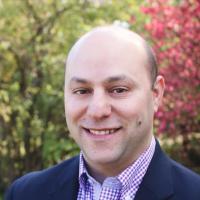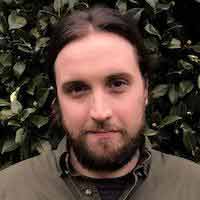When you click on a sponsoring school or program advertised on our site, or fill out a form to request information from a sponsoring school, we may earn a commission. View our advertising disclosure for more details.
“One thing that we are struggling with is reimbursement for some diagnostic agents…We are concerned that this lack of reimbursement will stunt the growth of nuclear medicine and reduce patient access to care.”
– Dmitry Beyder, MPA, CNMT
Medicine and treatments used to treat cancers with radiation fall under the category of nuclear medicine. A number of Medicare recipients often experience difficulty when making claims under Medicare coverage for certain nuclear medicine treatments. Glitches of the Medicare website notwithstanding, legislation plays a major role in how governmentally-paid insurance plans help elderly and lower-income persons pay for life-saving procedures.
In March 2019, as a remedy, the Medicare Access to Radiology Care Act (HR 1970) was introduced in the House of Representatives. Though it has yet to pass the House or the Senate and is currently stuck in the Subcommittee on Health, the purpose of the bill has many professionals very excited. Its stated goal is to “amend title XVIII of the Social Security Act to provide for payment for services of radiologist assistants under the Medicare program, and for other purposes.”
The American Society of Radiologic Technologists (ASRT), one of the authorities and lead advocacy organizations for nuclear medicine, has shown significant support for this new piece of US legislation that seeks to remedy Medicare disbursement problems for radiologic treatments. The bill would also allow radiologic assistants (RA) to perform nuclear medicine procedures and treatments under Medicare plan coverage and would ensure that complete Medicare reimbursement is paid to providers for the work done by RAs.
The bill has the support of the major leading authorities on nuclear medicine and radiation technology. The ASRT, the Society of Nuclear Medicine and Molecular Imaging (SNMMI), the American Registry of Radiologic Technologists (ARRT), the American College of Radiologists (ACR), and the Society for Radiology Physician Extenders are working together to support the passing and enactment of MARCA (HR 1970).
Read on to learn about the importance of recognizing the work done in the field of nuclear medicine as well as the challenges and complexities of Medicare disbursements. Additionally, read an interview with Dmitry Beyder, a nuclear medicine technologist and member of the SNMMI, which includes a look into how he prepared for his enriching career.
The Importance of Recognition – Nuclear Science Week 2021
A radiologic technologist is just one career among many in nuclear medicine and nuclear science. Other careers in nuclear medicine include nuclear pharmacists, dosimetrists, nuclear medicine physicists, and more. The hard work that professionals perform in nuclear science is recognized each year during Nuclear Science Week (NSW). Held the third week of October, it will be celebrated October 18-22, 2021.
This recognition week focuses on all aspects of nuclear science, including “carbon-free energy, global leadership, transformative healthcare, innovation & technology, and space exploration,” according to the NWS website. The goal of NWS is to highlight the work done in nuclear science at all levels, including local, state, regional, and national.
There are several ways for professionals, employers, and interested citizens to get involved with this exciting week. For professionals, it can be beneficial to attend the conference hosted for NSW. There they can network and collaborate with some of the top minds in nuclear science. Radiologic technologists can volunteer at schools or community centers to talk about the nuclear science work they do.
Employers should use NSW to recognize the hard work their nuclear science professionals do. Ways to acknowledge these medical experts include issuing press releases, organizing a celebration lunch, issuing a company-wide memo highlighting the work performed, or writing personal thank you notes.
Members of the general public with interests in nuclear science can also participate in NSW. One way to do so is by reaching out to local companies to inquire about their NSW events and attending. Another way is by sponsoring a local lecture at a library or facilitating a nuclear medicine technologist visiting a school to talk about their job and the importance of nuclear science. The NSW website features an extensive section for educators, including lesson plans, resources, and virtual episodes to facilitate classroom instruction on nuclear science.
Featured Interviewee: Certified Nuclear Medicine Technologist Dmitry Beyder

Dmitry Beyder is a certified nuclear medicine technologist, who holds a master’s degree in public administration (MPA) from New York University. He has been a member of the Society of Nuclear Medicine and Molecular Imaging (SNMMI) for 20 years, and during this period worked for major academic facilities such as the Memorial Sloan-Kettering Cancer Center, Oregon Health & Science University, and the Barnes-Jewish Hospital.
In his role at those facilities, he provided direct patient care and was a nuclear medicine leader for more than ten years. He is currently a program manager for outpatient radiology. He has authored many papers and continuing education presentations for SNMMI annual meetings and has been chair of a number of committees for the SNMMI Technologist Section.
Medicare Disbursement Challenges in Radiologic & Nuclear Medicine
Medicare has been known to have challenges paying out to healthcare providers and covering the costs of treatments or medicines in the past. This is partly due to the sheer number of cases and their individual factors but also because governmental insurance plans are not always properly tailored to fit the needs of those who hold them. In the case of patients seeking coverage, Medicare’s commitment to radiologic coverage has been known to be somewhat inconsistent.
So, what kinds of treatments, medicines, and operations do Medicare disbursements typically cover when it comes to nuclear medicine? In other words, what are some of the areas that the MARCA bill is meant to address?
“Medicare generally covers nuclear medicine imaging procedures and radionuclides used in those procedures,” says Dmitry Beyder. “Patients should consult their physicians about specific coverage. One thing that we are struggling with is reimbursement for some diagnostic agents.”
According to the SNMMI, a common issue when it comes to ensuring proper coverage for radiologic treatment is how to provide the right kind of financial coverage for patients who have Medicare. For example, the drugs gallium Ga 68-DOTATATE and fluciclovine F-18 are administered to help radiologic technologists identify locations for treatment with advanced imaging machinery.
They can be expensive, and patients on a tight healthcare budget might not be able to afford them for use in their treatments—particularly if Medicare has determined that the drugs cannot be covered. This process of Medicare coverage approval is something of a mystery, but it can’t be denied that preventing Medicare recipients from accessing necessary drugs is not a viable approach to insurance.
“We are concerned that this lack of reimbursement will stunt the growth of nuclear medicine and reduce patient access to care,” he says. “SNMMI and its members have been vocal about this, and we traveled to Washington, DC for Capitol Hill Day this year to talk to our congressional representatives about a long-term fix for reimbursement of these drugs.”
Preparing to Become a Nuclear Medicine Technologist
Like all other health sciences fields, the future of radiological technology holds immense possibilities for advanced treatments, equipment, and healing. Even the title of radiologic technologist reminds us that new machines and technologies are critical to the work done in nuclear medicine.
Dmitry Beyder’s job as a CNMT puts him at the forefront of radiologic technologies. His education, training, and introduction to nuclear medicine laid the groundwork for a stimulating and rewarding career. Beyder breaks down how one might prepare for a career in nuclear medicine or radiologic technology. Unsurprisingly, his expertise is anchored in high-quality curriculum.
“I have a bachelor’s in science from SUNY Buffalo in nuclear medicine technologist technology, and I am a certified nuclear medicine technologist (CNMT) with certification from the Nuclear Medicine Technology Certification Board,” says Beyder. “During my first job in New York City, Memorial Sloan-Kettering Cancer Center gave me an opportunity to attend New York University for my MPA degree in healthcare management and international healthcare. That MPA degree has been integral to my advancement and promotion in healthcare. Also, I have taken some excellent courses in my various places of employment that directly helped me with leadership skills.”
Beyond Beyder’s combination of educational and professional qualifications, he brings enthusiasm to the dynamic field of radiology. As such, there’s a number of exciting new approaches that he’s looking forward to pursuing.
“I’m passionate about the nuclear medicine profession!” says Beyder.
“One really cool thing happening in the nuclear medicine field is theranostics, a new type of precision medicine tool that allows personalized patient treatment including diagnosis, treatment planning, drug delivery, and response assessment,” he says. “The Lutathera treatment for neuroendocrine tumors is a game-changer that allows us to image disease with precision, then treat what we find with therapeutic agents that go directly to where the patient is sick.”
With advancements in healthcare technology like those just mentioned and the possibility of the MARCA bill forever changing the way Medicare disbursements are paid, things are looking more positive in the area of radiologic and nuclear medicine treatment coverage.
The Future of Nuclear Medicine Technology
“I see a strong future for the field of nuclear medicine technology,” says Beyder. “Patients want quick, decisive, and less-invasive medicine, and this is what we do in nuclear medicine.”
Of course, if nuclear medicine offers a more precise and effective treatment and technologies continue to grow and advance at their current rate, the rapid growth of available positions in the field will strengthen the job market.
“This field will grow in the future, and I think we will have workforce shortages in relation to growing patient needs,” says Beyder. “Patients are living longer and have higher expectations of healthcare, and we are in a key position for supporting and improving community health. The nuclear medicine field is in an amazing place right now.”
It might be difficult to consider the fight for complete Medicare coverage for radiologic treatments won, but the introduction and subsequent support of the MARCA bill is encouraging to Dmitry Beyder.
“I expect to see some great techniques and opportunities arise over the next 10 to 20 years,” says Beyder. “We need excited and hard-working people to join the workforce, eager to learn and do, and this will be an amazing career for them.”
From the time he joined the SNMMI as a junior in college and presented his first paper on the subject of standard uptake values all the way to his management role in outpatient care, Beyder’s experience has evolved as the field has grown. Both his involvement with the Society of Nuclear Medicine and Molecular Imaging and his expert education gave him the tools he needed to excel in the field.
So what advice can Dmitry Beyder give to prospective professionals in this field?
He says the key is to stay curious: “Aspiring nuclear medicine technologists should be willing to try new things, learn about the area and other areas in radiology and healthcare, ask a lot of questions, go to conferences, and continue with formal education,” says Beyder. “Be motivated! Push yourself! And most of all, enjoy the ride and make a career out of your journey.”
